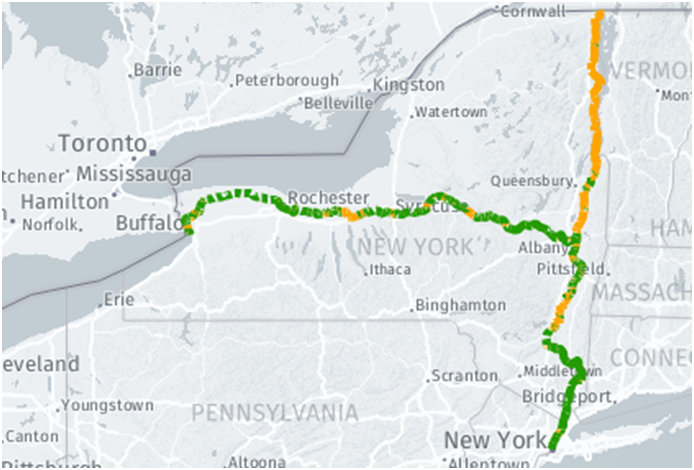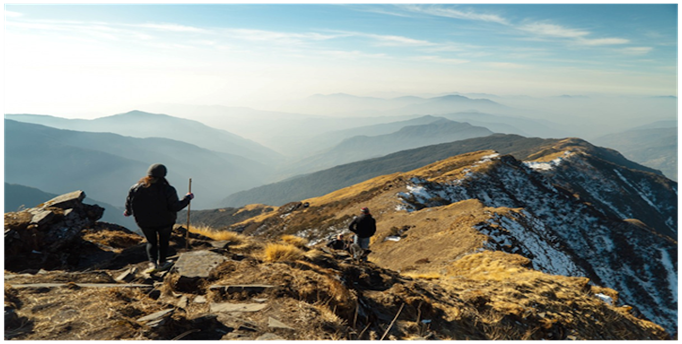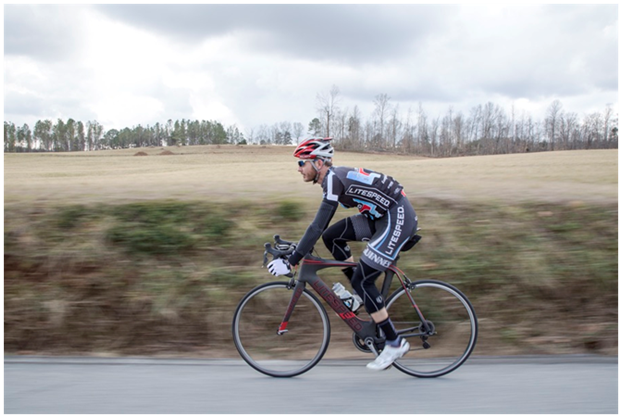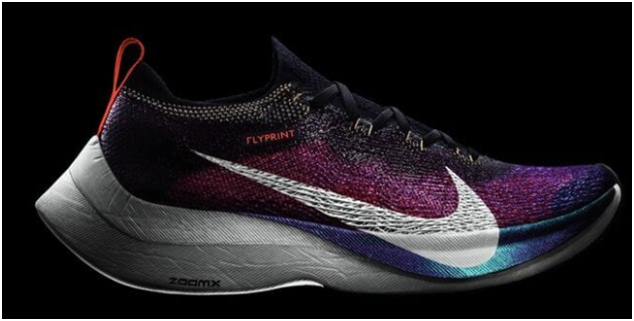
Charles R. Goulding and Ryan Donley consider a hike or bike with 3D printing.
New York State has finished up a 750-mile multipurpose trail that stretches from the southern tip of Manhattan to the Canadian border. The Empire Trail connects roughly 400 miles of off-road trails that were not previously linked while also adding 180 miles of new trails to the network. An additional 170 miles of on-road bike routes were included as the nation continues to grow an interest in cycling throughout the pandemic. Not only does the new trail accommodate cycling, but it also provides a broad range of opportunities for hikers, runners, skiers, and campers – people wanting to explore the natural beauty of New York while continuing to grapple with COVID-19 restrictions.
3D Printing in Recreation
Hiking Equipment
As a result of the COVID-19 pandemic, the U.S. has experienced a notable rise in interest in hiking as an activity to explore nature safely. The federal government has even funded the 421 National Park sites with $9.5 billion. An activity like hiking requires the perfect gear to endure a trip with tolls such as backpacks, carabiners, and replacement parts in the event of a broken piece of gear.
3D printing allows hikers to customize their gear to meet their specific needs and prepare for a worst-case scenario event. 3D printing also addresses a concern of many hikers which is weight and comfort, 3D printing additional accessories provides reliable and lightweight tools while granting access to perfect-fit or flex-fit options.

Cycling
Interest in cycling has also risen meteorically at the outset of the COVID-19 pandemic and has done so in a way that many bike shops and companies are struggling to meet the high demand for new bikes (custom or stock) as well as spare or replacement parts. One bicycle company, in particular, has been experimenting with 3D printing since 2012 as a process to perform rapid product development. The American Bicycle Group has even doubled its number of employees from 30 to 67 in the midst of the pandemic to meet the popular demand for not only bicycles but spare parts as well.

Running
Another cardio-intensive activity on the upswing as a result of the COVID-19 pandemic is running. Shoe companies have long been experimenting with 3D printing, with Nike recently introducing the Zoom Vaporfly made from a light and durable 3D printed fabric that is adored by running amateurs and professionals. Adidas, Under Armour, and Reebok have also been experimenting with and rolling out 3D printed running shoe concepts. 3D printed running shoes are becoming vital to runners as the force and shock your lower extremities experience from running can have long term effects if proper footwear is not utilized. The 3D printed fabrics in new lines of running shoes have quickly become enthusiast’s favorite as they realize the benefits both short and long term.

R&D tax credit incentives are available for 3D printing and similar experimental activities for product development in the recreational sector.
The Research & Development Tax Credit
Whether it’s used for creating and testing prototypes or for final production, 3D printing is a great indicator that R&D Credit eligible activities are taking place. Companies implementing this technology at any point should consider taking advantage of R&D Tax Credits.
Enacted in 1981, the now permanent Federal Research and Development (R&D) Tax Credit allows a credit that typically ranges from 4%-7% of eligible spending for new and improved products and processes. Qualified research must meet the following four criteria:
- Must be technological in nature
- Must be a component of the taxpayer’s business
- Must represent R&D in the experimental sense and generally includes all such costs related to the development or improvement of a product or process
- Must eliminate uncertainty through a process of experimentation that considers one or more alternatives
Eligible costs include US employee wages, cost of supplies consumed in the R&D process, cost of pre-production testing, US contract research expenses, and certain costs associated with developing a patent.
On December 18, 2015, President Obama signed the PATH Act, making the R&D Tax Credit permanent. Beginning in 2016, the R&D credit can be used to offset Alternative Minimum tax for companies with revenue below $50MM and, startup businesses can obtain up to $250,000 per year in payroll tax cash rebates.
Conclusion
The Empire Trail opening presents a unique opportunity for anyone from first-timers to avid enthusiasts of varying recreational activities to partake in exploring miles upon miles of beautiful trails. The 750-mile trail also supports increased outdoor activities and the 3D printing products that can help make the trip fun.
